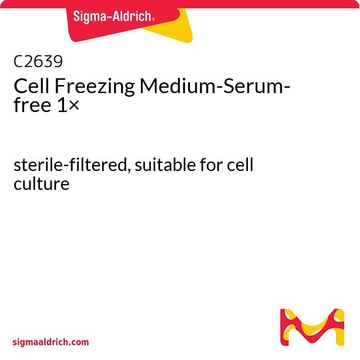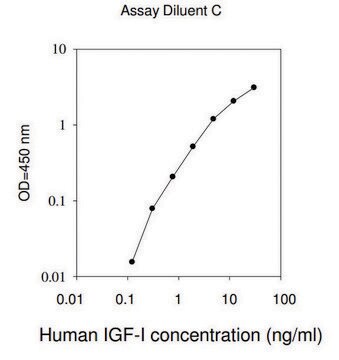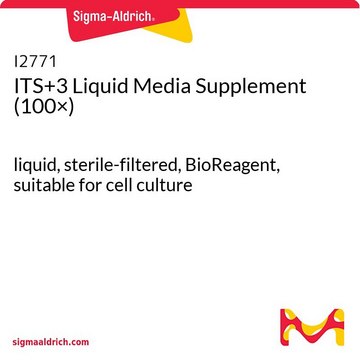S2640
Serum Replacement 3 (50×)
liquid, sterile-filtered, suitable for cell culture
Synonym(s):
Serum Substitute
Sign Into View Organizational & Contract Pricing
All Photos(1)
About This Item
UNSPSC Code:
12352207
NACRES:
NA.71
sterility:
sterile-filtered
form:
liquid
Recommended Products
sterility
sterile-filtered
Quality Level
form
liquid
technique(s)
cell culture | mammalian: suitable
impurities
endotoxin, tested
storage temp.
2-8°C
General description
Sigma′s Serum Replacement 3 is a fortified, multipurpose serum replacement for the long-term culturing of anchorage dependant and suspension cultures. This serum replacement is effective in research situations such as: studying the effects of growth factors or in the manufacturing of cell derived products.
Application
Serum Replacement 3 (50×) has been used as a supplement in modified phosphate-buffered saline (DPBS) and as a replacement for the growth medium for in vitro experiments for Tendon cells.
Other Notes
Defined serum replacement designed primarily for the long-term growth of human cells or other mammalian cells. Recommended for use in the production of cell-secreted proteins. Contains only human proteins (i.e., human serum albumin, human transferrin, human recombinant insulin). Does not contain growth factors, steroid hormones, glucocorticoids, cell adhesion factors, detectable Ig and mitogens. May be used with anchorage-dependent and suspension cells.
Warning
This product is tested and found non-reactive for Hepatitis B Surface Antigen (HBsAg) and non-reactive for Human Immunodeficiency Virus (HIV) antibody by ELISA. Nevertheless, products of human origin should be considered potentially infectious and handled accordingly.
Analysis Note
Stable for 30 days when diluted in cell culture medium.
Storage Class Code
10 - Combustible liquids
WGK
WGK 3
Flash Point(F)
Not applicable
Flash Point(C)
Not applicable
Choose from one of the most recent versions:
Already Own This Product?
Find documentation for the products that you have recently purchased in the Document Library.
Customers Also Viewed
HGF Mediates the Anti-inflammatory Effects of PRP on Injured Tendons
Zhang J, et al.
PLoS ONE, 8(6), e67303-e67303 (2013)
Eric J Suh et al.
Genome biology, 13(12), R121-R121 (2012-12-25)
Although quiescence (reversible cell cycle arrest) is a key part in the life history and fate of many mammalian cell types, the mechanisms of gene regulation in quiescent cells are poorly understood. We sought to clarify the role of microRNAs
Electrical properties of breast cancer cells from impedance measurement of cell suspensions
IEEE Transactions on Bio-Medical Engineering, 224, 012081-012081 (2010)
Our team of scientists has experience in all areas of research including Life Science, Material Science, Chemical Synthesis, Chromatography, Analytical and many others.
Contact Technical Service











